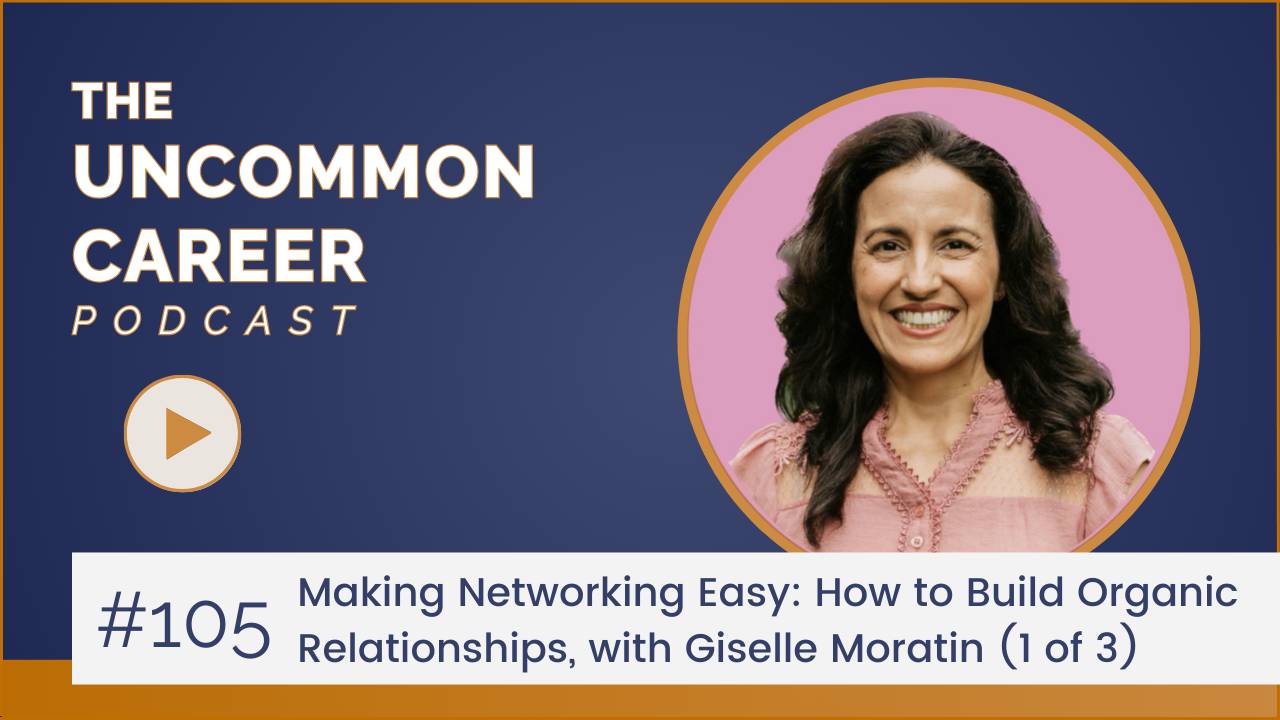107. High Pressure Work Environments: How to Manage, Diagnose and Respond to Them
Apr 15, 2025
This episode is part of the Elevated Leadership Podcast Series, co-hosted with Julianna Yau Yorgan. It is available here on The Uncommon Career Podcast and The Daring to Succeed Podcast.
High-Pressure Work Environments: How to Manage, Diagnose, and Respond
Julianna Yau Yorgan joins in for this powerful conversation on a topic that hits close to home for so many professionals: high-pressure workplaces. If things have felt increasingly chaotic at work—never-ending requests, rising expectations, and mounting fatigue—it might be more than just a busy season.
This isn’t just about stress. It’s about the kind of pressure that slowly builds until burnout, resentment, and disconnection take hold. Whether it’s been happening gradually or it hit all at once, it’s time to step back and ask the hard questions: What’s causing the pressure? And what’s actually within reach to change?
|
Listen on your favorite podcast app: |
| |
Start by Diagnosing the Source
High pressure can come from multiple directions. One of the most overlooked distinctions is whether that pressure is external or internal.
-
External pressure often stems from company or team culture, overwhelming workloads, poor management, or misaligned expectations.
-
Internal pressure shows up as perfectionism, people-pleasing, over-responsibility, or fear of letting others down.
Both can be equally damaging—and both require different responses. Sometimes it’s not the workload itself, but the personal narrative driving the work that creates the weight.
Understand the Role of Perception
Miscommunication and assumptions can amplify pressure. When there’s a belief that everything depends on one person, or when volunteering becomes a default, work becomes less about contribution and more about obligation.
Here’s the truth that often gets lost:
-
Taking on everything isn’t a badge of honor—it’s a recipe for burnout.
-
Being seen as “the reliable one” isn’t always sustainable if it comes at the cost of boundaries or support.
-
Always saying “yes” doesn’t just affect workload—it impacts development for the whole team.
It’s important to recognize when others’ lack of development becomes a personal burden. That’s not an individual problem. That’s a leadership issue.
Spot the Cultural Norms and Unspoken Expectations
High-pressure cultures often disguise expectations in praise. Recognition tends to follow those who “power through,” but this rarely accounts for long-term well-being.
Watch for signs like:
-
Leaders working overtime consistently (even if they say they don’t expect the same).
-
Praise directed only at urgency and output—not thoughtful contribution or collaboration.
-
A lack of structure that leads to every task becoming a fire drill.
Many workplaces unintentionally reward overextension. Recognizing those patterns is the first step toward deciding whether they can be changed—or whether it’s time to walk away.
Set Boundaries with Strategy, Not Guilt
Saying no doesn’t mean giving up. It means choosing sustainability over short-term appeasement. One of the most powerful strategies is this:
-
Use the equity already built through consistent performance to opt out of projects that don’t serve growth or alignment.
-
Redirect energy toward long-term development, even if that’s for a future role outside the current organization.
-
Shift from being the “go-to” for tasks to being the “go-to” for impact.
Boundaries are about honoring future goals, not just managing current capacity.
Don’t Wait Until Crisis to Speak Up
Many people wait until full burnout to ask for help. But there’s a better way—learning how to identify the early signs and act before things fall apart.
Look for internal signals:
-
Chronic exhaustion, headaches, or difficulty sleeping
-
Inability to mentally disconnect after work
-
Loss of motivation or sense of detachment
And external signals:
-
A culture that values output over wellness
-
Silence around workload distribution
-
Unspoken pressure to always be “on”
If any of this sounds familiar, it’s already time to re-evaluate.
Reclaim the Power to Choose
There are always three places to take back control:
-
Anticipation – seeing patterns and preparing for pressure before it hits
-
Action – deciding what to say yes and no to, and how to protect energy
-
Response – managing reactions, setting boundaries, and choosing next steps
The key is in realizing that the environment doesn’t get to make all the decisions. With clarity, it becomes easier to spot where pressure is creeping in and interrupt the pattern before it turns into burnout.
Final Thoughts
High-pressure work isn’t always avoidable—but it is manageable. And no matter how long things have been overwhelming, change is possible.
-
Not all pressure is bad—but pressure without growth, recognition, or support isn’t sustainable.
-
Don’t wait for permission to protect your peace or prioritize your progress.
-
Reflect, reassess, and act from a place of clarity—not crisis.
Even in the busiest, most chaotic seasons, it’s still possible to reset. And sometimes, all it takes is one shift—one conversation, one no, one reframe—to create the breathing room needed to make lasting change.
The pressure doesn’t have to define the experience.
It’s possible to work with excellence and preserve well-being.
Keep going—and protect what matters most.

P.S. Follow me on LinkedIn for more highly-practical guidance.











